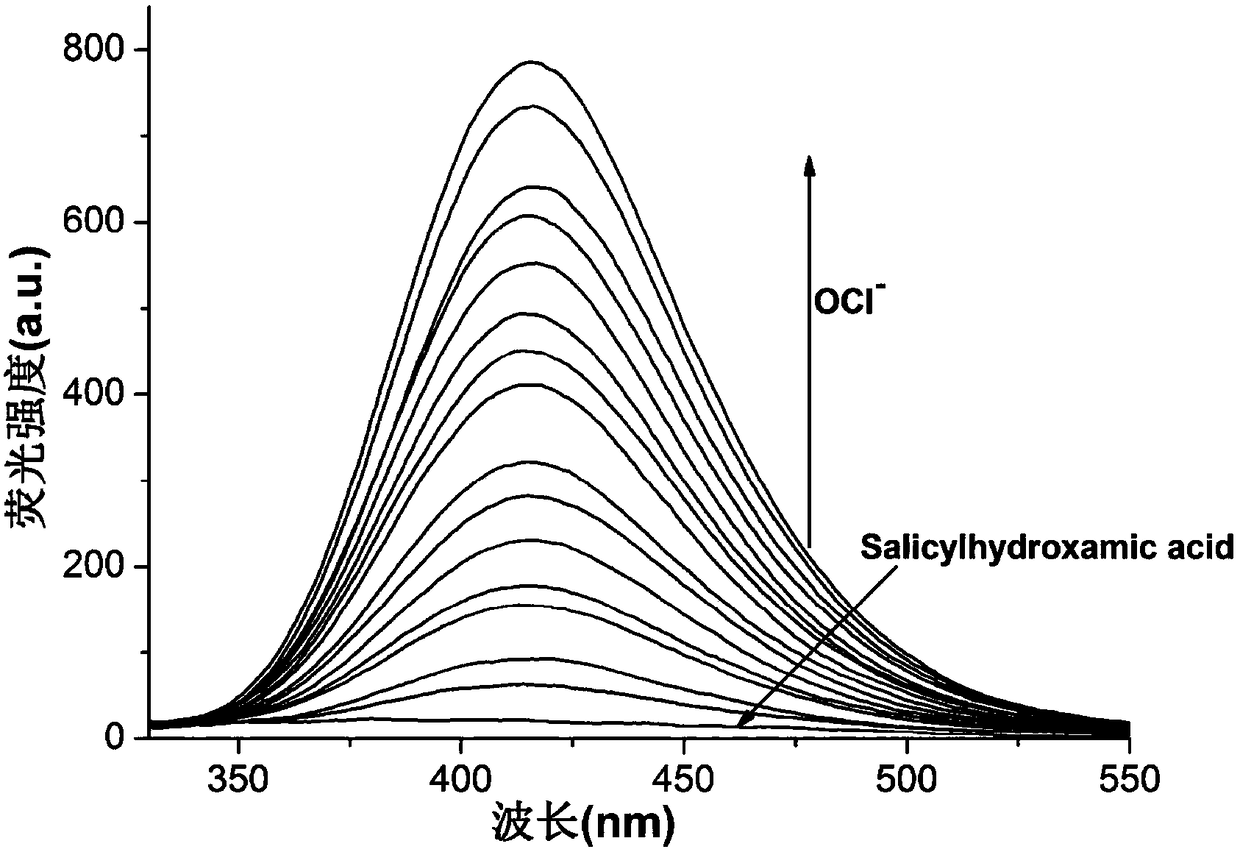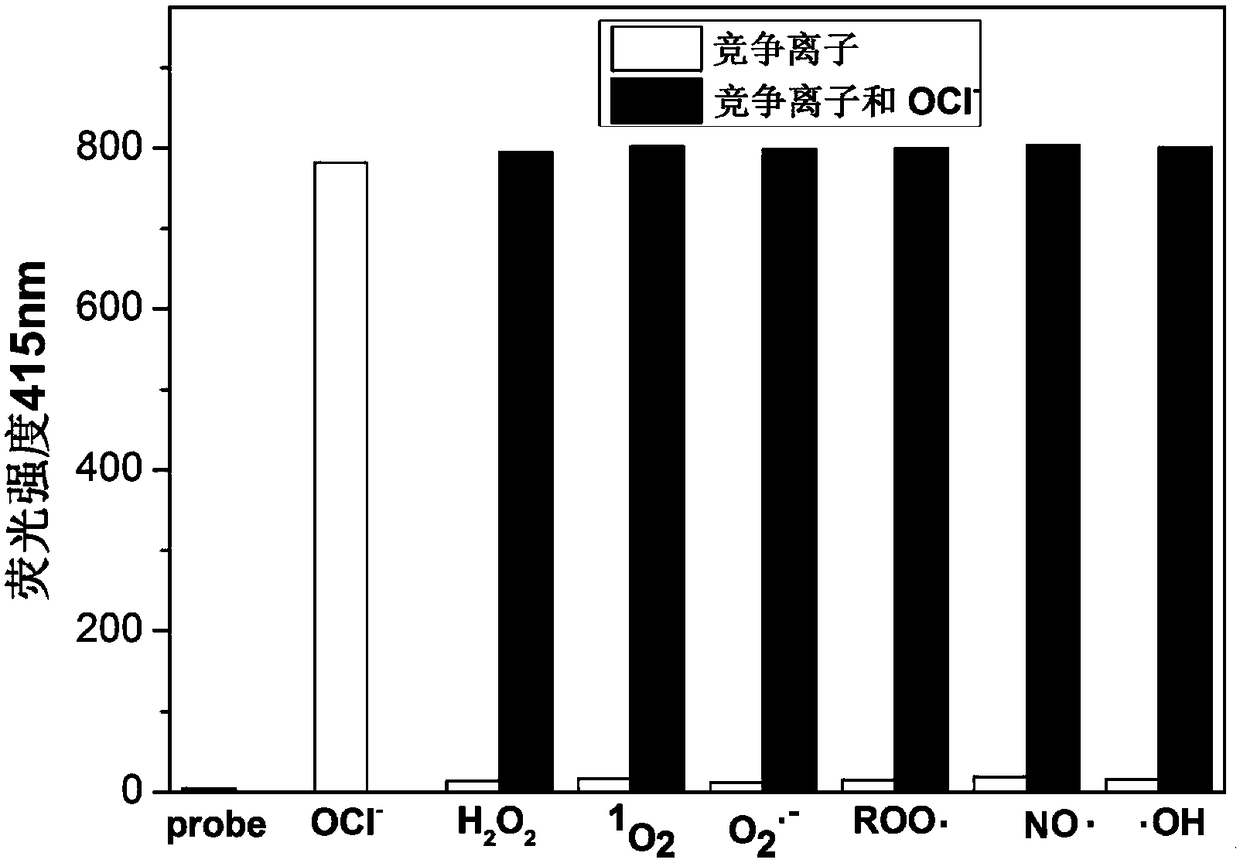Application of Salicylhydroxamic Acid in Detecting Hypochlorite
A technology of salicyl hydroxamic acid and hypochlorite, which is applied in the field of hypochlorous acid detection and analysis, can solve the problems of complex process and high cost, and achieve the effect of simple detection process, high sensitivity and selectivity, and accurate detection results
- Summary
- Abstract
- Description
- Claims
- Application Information
AI Technical Summary
Problems solved by technology
Method used
Image
Examples
Embodiment 1
[0017] Prepare 2mM salicylhydroxamic acid solution with methanol; add 2mL of methanol solution and 2.5μL of salicylhydroxamic acid methanol solution to a clean fluorescent cuvette, take NaClO solution, and gradually use micro-injection Add the sample into the cuvette, and detect it on the fluorescence spectrophotometer while adding the sample. With the addition of NaClO, the fluorescence intensity at 415nm gradually increases. Fluorescence emission map see figure 1 .
Embodiment 2
[0019] Prepare 2mM NaClO solution with methanol; add 2mL of methanol solution and 2.5μL of salicylhydroxamic acid methanol solution to 12 fluorescent cuvettes, then add 1 molar equivalent of NaClO and 50 molar equivalent of Various other analytes (ClO - ,H 2 o 2 , 1 o 2 ,·O 2 - , ROO , NO , OH), detected on the fluorescence spectrophotometer, draw the histogram of the 415nm fluorescence intensity corresponding to different analytes, and obtain the fluorescence emission diagram, see figure 2 (NaClO makes the fluorescence intensity of salicyl hydroxamic acid change from 24 to about 787, and other analytes basically do not cause changes in the fluorescence intensity of salicyl hydroxamic acid).
[0020] It has been proved by experiments that other analytes do not interfere with the determination of NaClO by the system.
Embodiment 3
[0022] Prepare 2mM NaClO solution with distilled water, add 2mL of methanol solution and 2.5μL of salicylhydroxamic acid methanol solution to the fluorescence cuvette, gradually add the volume of NaClO solution to 0.17, 0.35, 0.50, 0.60, 0.70, 0.95, 1.0, 1.25, 1.36, 1.54, 1.64uL, and the corresponding fluorescence intensity F at 415nm measured on the fluorescence spectrometer is 65, 156, 233, 284, 325, 457, 496, 589, 650, 736, 787, to The concentration of NaClO is the abscissa, and the relative fluorescence intensity F-F 0 Plot the graph for the ordinate, F 0 ﹦24, get the working curve of NaClO concentration; the linear regression equation is: F-F 0 -=489.232c-39.2948, the unit of c is 10 -6 mol / L; see image 3 .
PUM
 Login to View More
Login to View More Abstract
Description
Claims
Application Information
 Login to View More
Login to View More - R&D
- Intellectual Property
- Life Sciences
- Materials
- Tech Scout
- Unparalleled Data Quality
- Higher Quality Content
- 60% Fewer Hallucinations
Browse by: Latest US Patents, China's latest patents, Technical Efficacy Thesaurus, Application Domain, Technology Topic, Popular Technical Reports.
© 2025 PatSnap. All rights reserved.Legal|Privacy policy|Modern Slavery Act Transparency Statement|Sitemap|About US| Contact US: help@patsnap.com



